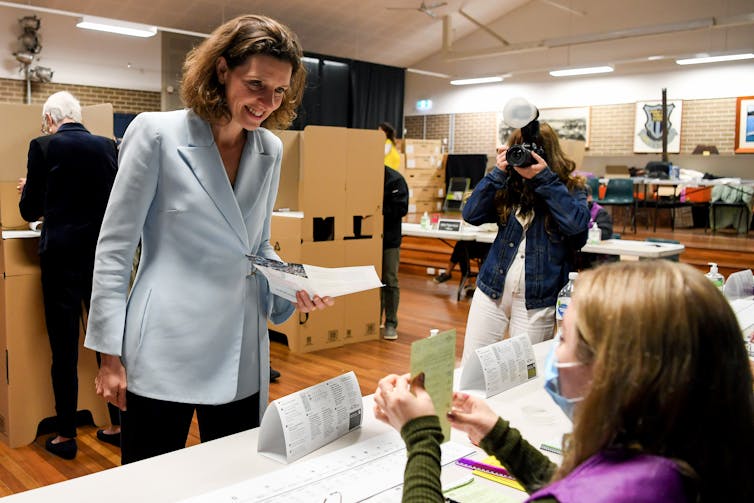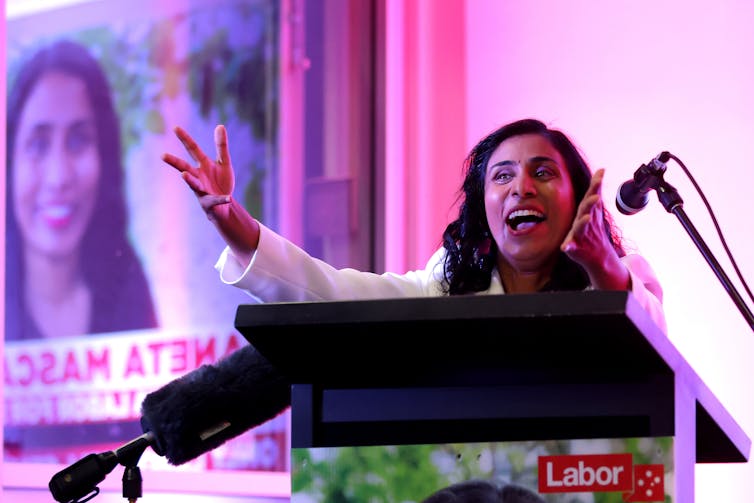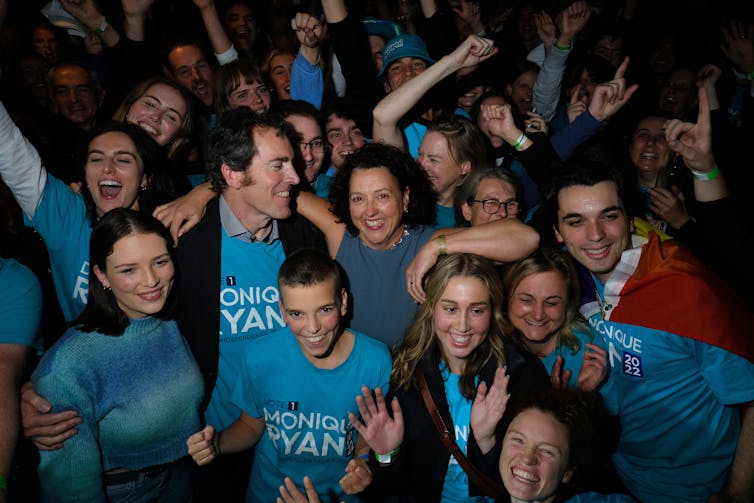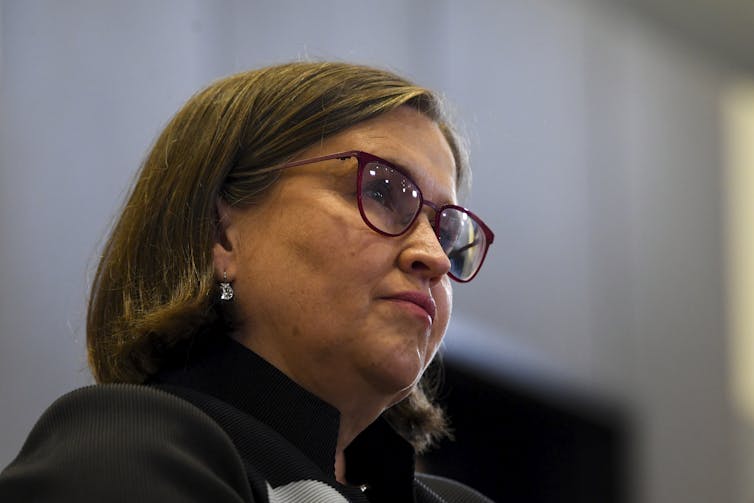The 2022 federal election was a win for women candidates, and a historic moment in Australia’s journey towards a parliament that truly endorses and promotes gender equality in all its work.
At this stage of counting, it looks as though the House of Representatives will have at least 57 women, making 38% of the chamber female. This is our highest proportion of women ever in the lower house.
The Senate reached and exceeded 50% in the last parliament, and will maintain this in the new parliament. These new levels will see Australia reverse a 20-year decline in the international ranking of women in national parliaments, from 57th up to around 37th, ahead of Portugal, Tanzania and Italy.
How did this happen? And what will this mean for the culture at Parliament House?
First, look at the numbers
The simplest explanation is numerical: more women won because more women than ever contested seats in 2022, rendering true the maxim “you gotta be in it to win it”. Women represented just under 40% of all candidates in Saturday’s poll – an increase, says analyst Ben Raue, from about 32% in 2016 and 2019, and under 28% in 2013.

Bianca De Marchi/AAP
The 2022 numbers also indicate women candidates actually outperformed men candidates.
And consider the swing
The depletion of the Liberal Party vote was accompanied by a wave of unexpected wins for women.
Women won as challengers in safe or fairly safe seats previously held by incumbent MPs and ministers. This includes the well-publicised wins of independent and minor party women in Curtin, Fowler, Goldstein, Kooyong, Mackellar, North Sydney, Ryan and Wentworth.
But it also includes the wins of Labor Party women who took the seats of Boothby, Chisholm, Hasluck, Higgins, Pearce, Reid and Swan.

Richard Wainwright/AAP
In this, there’s a historical comparison with the 1996 election in which John Howard’s landslide election saw an unprecedented 23 women swept into the House of Representatives. The Liberal Party had also placed these women in unwinnable seats, but the magnitude of the swing away from Labor changed the meaning of a safe, as opposed to a marginal, seat.
In fact, those women consolidated their positions in the 1998 election, and the number of women increased further. The swing towards the Coalition in 1996 was so great it was hard for the Labor Party to come back. However, women in the “class of 1996” also kept their marginal seats through concerted work in their electorates. The class of 2022 would do well to heed this lesson.
Community campaigning was vital
In 2022, Australian voters took advantage of the alternatives presented by independent and Green women candidates. Raue, again, was the first to notice the seismic change in the proportion of women running as independents in 2022: a whopping 65%, up from about 22% in 2019.
Women made the deliberate choice not to run as candidates for the major political parties. And for good reason: Australian major parties have proven, time and time again, that their pre-selection processes are top-down, out of touch and impervious to increasingly loud calls for equality and diversity.
These campaigns were also driven by record numbers of volunteers, knocking on record numbers of doors, having record numbers of conversations with local communities. These community-based campaigns followed the model established by Cathy McGowan in Indi in 2013, and serve as a key lesson not just in Australia, but around the world.
It’s also true that the swing and community based campaigns resulted in the loss of female talent. Moderate Liberal Katie Allen could not stem her electorate’s dissatisfaction with the government in Melbourne’s Higgins. Likewise, Labor’s Terri Butler could not prevent the “Greenslide” in Brisbane’s Griffith. Parachuted Labor candidate Kristina Keneally could not convince the people of Fowler that she would be their best representative.

Luis Ascui/AAP
Voters wanted something different
In what was arguably one of the country’s most blokey electoral campaigns, it appears Australian voters wanted something different.
Gender equality was not top of the list of issues considered important in this election, in fact it was well below climate change and the cost-of-living.
But voters across the country chose candidates who explicitly articulated a desire to shift our political culture. Climate 200 candidates, for example, had Women’s safety and equality one of their headline policies.
The last parliament brought the toxic work culture of Parliament House into the headlines.
Sex Discrimination Commissioner Kate Jenkins’s Set the Standard report late last year found the “win-at-all costs” mentality of major party politics was one of the key drivers of unsafe parliamentary workplaces. Deep-seated partisan differences have also prevented cross-party collaboration in the name of gender equality.

Lukas Coch/AAP
The election of so many women and so many women from beyond the major parties is a huge opportunity to change this.
The incoming Labor government will need to engage with a new brand of women in parliaments: women, importantly, who are new to the parliamentary area but who have worked in professional workplaces. They will carry those standards and expectations into the chamber.
The new cross-bench will not be encumbered by the need to protect a party. In fact, their electorates have given them a mandate to keep the parliament accountable, not only on the full set of recommendations of the Set the Standard report, but on the 55 recommendations of Jenkins’ Respect@Work report on sexual harrassment.
The women on the cross-bench will not always agree with each other, let alone with the new government, but there is a sense that they will approach the job differently. As new independent Goldstein MP Zoe Daniel told the ABC’s Insiders after the election, “independents already communicate and collaborate [with each other]”.
If this approach continues, it will make a big difference to the way parliament works.
Correction: the original piece included Robertson in the list of seats won by Labor Party women. It was won by a man.![]()
This article is republished from The Conversation under a Creative Commons license. Read the original article.
- Feature image: Zoe Daniel. Picture: Diego Fedele/ AAP
The post More women: will Parliament be a safe workplace? appeared first on BroadAgenda.
This post was originally published on BroadAgenda.